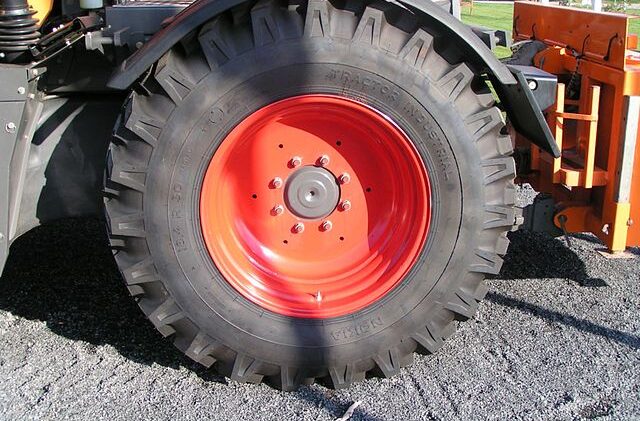The components on your tractor that take the most strain when working are the tyres.
And, of the tyre, the bit that works the hardest is the sidewall. This is particularly the case when working with ground-engaging implements such as rippers or ploughs.
Forward force
With the ripper or plough engaged in the ground, all the power generated by the engine to drag the tractor and implement forward is transferred to the driving wheels. Here, the force necessary to move forward is passed through the rotating wheel to the cleats at the bottom of the tractor tyres which, dug into the ground, prevent the wheel from slipping.
Thus, say you have a two-wheel drive tractor with an engine rated at 20kW, assuming both wheels are firmly engaged with the ground, the sidewalls of your tyres will be expected to cope with 10kW of energy each.
But, if one wheel is slipping, the full power of your tractor’s engine could be passed through only one tyre.
Tractor tyres are designed to cope
So what, you ask. Surely tractor tyres are designed to cope?
Yes, they are. But only when they are correctly inflated.
If you have ever watched an under-inflated tractor tyre in action you will have noticed that the relatively thin sidewall has a tendency to fold, or crease, at the bottom when force is applied.
Torn side-wall
This folding can cause tearing of the fabric lining of the tyre, and cracking of the rubber component.
And that will surely mean that you will need to buy a new tractor tyre.
Thus, along with all the other checks and tasks you should undertake before embarking on a work session aboard your tractor, a check of the pressure in your tyres is vital.
There are many more articles on machinery on our website.
Main image: Tractor tyre correctly inflated. Stefan Kuhn via Wikimedia Commons

